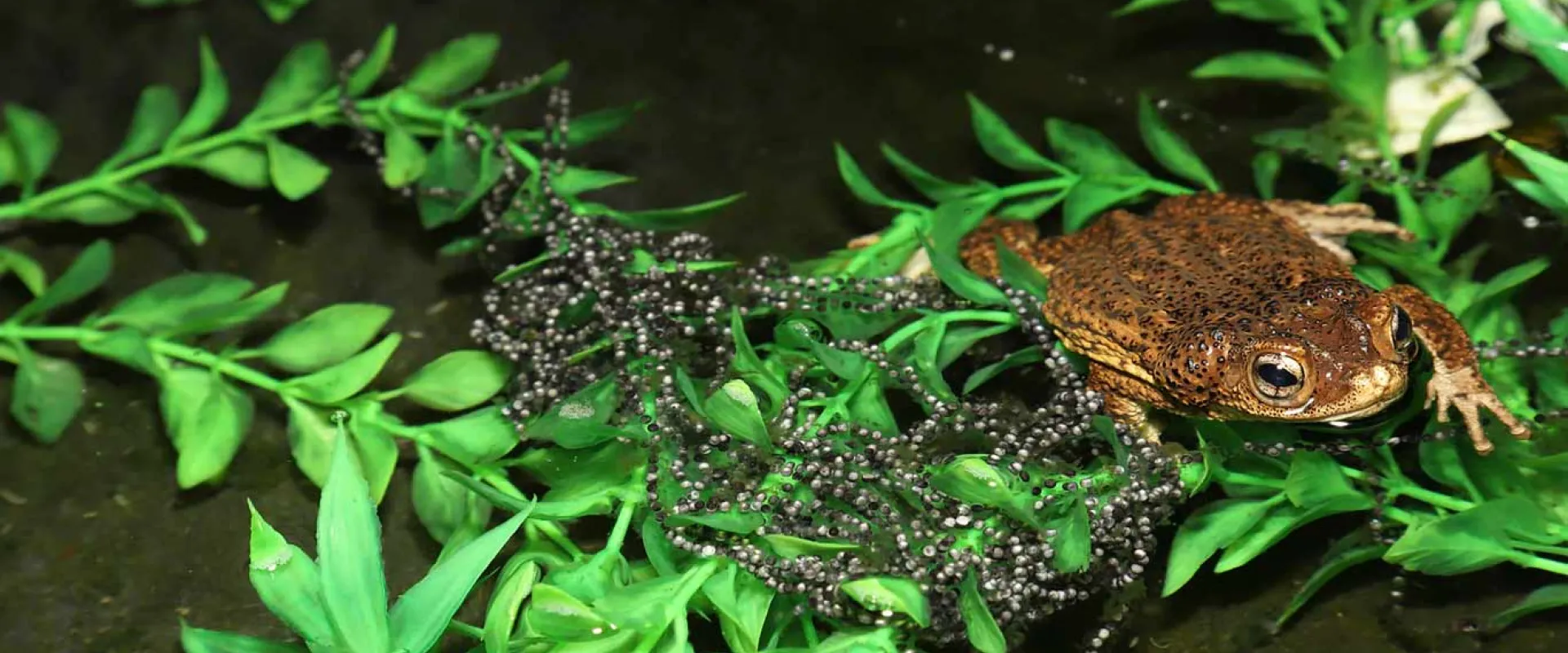Habitat loss, invasive species, and climate change threaten the Critically Endangered Puerto Rican crested toad from extinction. North Carolina Zoo is helping to save this species, found only in Puerto Rico and the Virgin Islands, through captive breeding and reintroduction efforts to supplement existing wild populations. In addition, the Zoo also supports a wetland restoration project that will ensure safe habitat for the toad well into the future.
The Puerto Rican Crested Toad: A Lazarus Species
Over 30% of amphibian species worldwide are experiencing declines. One such species is the Puerto Rican crested toad, the only toad native to Puerto Rico and the Virgin Islands; it is found nowhere else in the world. At one time, the species was thought to be extinct, until a population was rediscovered in 1966—such species are called Lazarus species, referring to their apparent return to life. Despite this second chance, the species has suffered severe population declines in recent decades. Currently, there are only two natural breeding sites left, both threatened by climate change. In addition, the largest remaining breeding pond known in Puerto Rico is under threat from rising sea levels and thus potential salt intrusion.
Increasing Toad Populations in the Wild
The North Carolina Zoo is working with several other zoos, the US Fish and Wildlife Service, and local partners in Puerto Rico on a recovery program for the Puerto Rican crested toad (locally known as sapo concho). To aid these efforts, the NC Zoo has a dedicated space for captive breeding of the toad, with the goal of releasing tadpoles in specially-made ponds in their native range in Puerto Rico once they are old enough to escape native predators (a process known as headstarting). To further improve the safety of released frogs and tadpoles, release ponds are surrounded by a mesh enclosure , while an ongoing invasive species removal program protects the tadpoles and breeding toads from invasive predators such as Indian mongoose and marine toads.
Increasing Habitat Availability
To mitigate the impact of sea level rise on the existing breeding habitats, the North Carolina Zoo is also in the process of planning a wetland to be constructed by members of the recovery group. This wetland will be constructed near the largest breeding site, but at a higher elevation, which should allow the species to reproduce safely for decades. Additional factors considered in the placement of this wetland included access to food and predator refuges, use of pesticides in the surrounding area, and future development plans in the area.
Raising Public Awareness
Captive breeding and reintroduction often fail because the pressures that caused population declines have not been reversed. For that reason, the North Carolina Zoo works with several local partners in Puerto Rico on education and outreach in the communities where the toad occurs. As part of an environmental awareness campaign, we are teaching the public about how their activities impacts the environment, the crested toads, and other wildlife endemic to Puerto Rico.
Partners: Citizens of the Karst, Para la Naturaleza, Puerto Rican Crested Toad SSP (with many other partner zoos and institutions), Puerto Rican Department of Natural and Environmental Resources, US Fish and Wildlife Service

